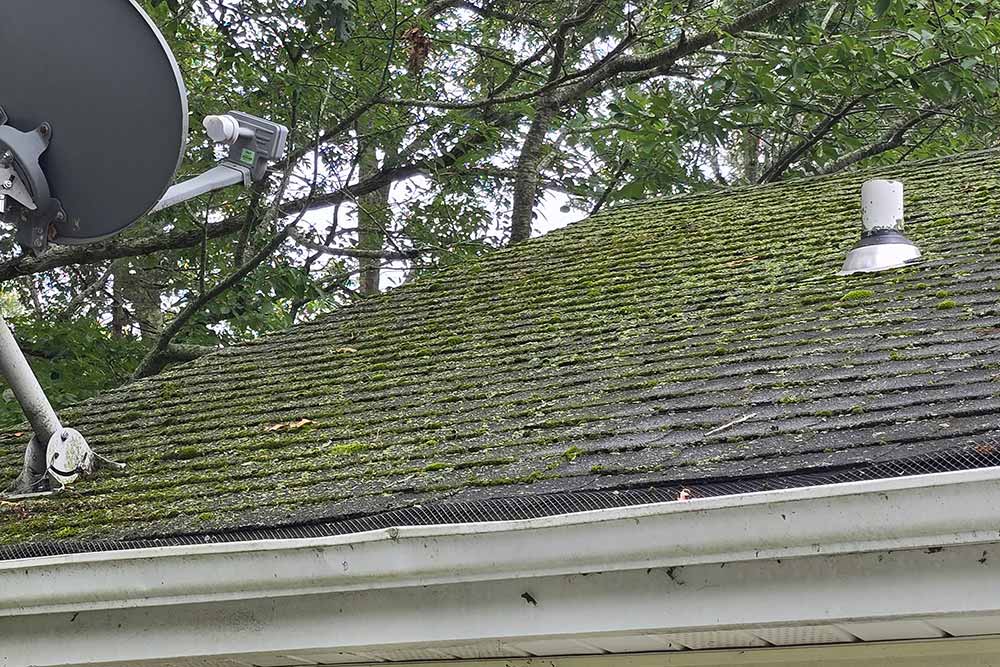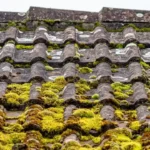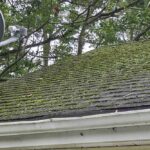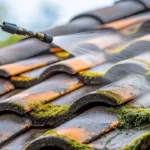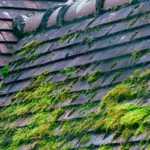When it comes to your home, the presence of roof moss might seem like a minor aesthetic issue. However, the environmental impact of roof moss can be more significant than it appears. Understanding the effects of roof moss is crucial for homeowners who wish to maintain the longevity and health of their homes.

What is Roof Moss?
Roof moss is a type of non-vascular plant that thrives in damp and shaded environments. It often grows on rooftops, especially in areas with high humidity and rainfall. While it may look lush and green, it can have several adverse effects on your roof and the environment.
How Does Roof Moss Affect the Environment?
The environmental impact of roof moss extends beyond just the structure of your home. Roof moss can contribute to increased moisture retention, leading to potential damage to roofing materials and increased energy consumption. Additionally, the growth of moss can affect local ecosystems by altering water runoff patterns.
The Impact on Roofing Materials
Moss retains moisture, which can result in the deterioration of roofing materials such as shingles and tiles. Over time, this can compromise the structural integrity of the roof, leading to costly repairs. It’s essential to address this issue to prevent further environmental and financial impacts.
Energy Consumption and Roof Moss
The presence of roof moss can also affect your home’s energy efficiency. Moss-covered roofs may require more energy to heat or cool since the moss layer can act as an insulating barrier. This increased energy usage contributes to a higher carbon footprint.
Water Runoff and Local Ecosystems
When moss grows on roofs, it affects the natural water runoff pattern. This can lead to water pooling and potential damage to the foundation of your home. Additionally, altered runoff patterns can impact local ecosystems, affecting plant and animal life.
Preventing Roof Moss Growth
Preventive measures are essential to mitigate the environmental impact of roof moss. Regular roof maintenance and care can help prevent moss growth and protect your home and the environment.
Regular Roof Maintenance
Ensuring your roof is clean and free from debris can significantly reduce the risk of moss growth. Regular inspections and cleaning can help maintain your roof’s health and prevent potential environmental damage. To learn more about maintaining your roof after moss removal, visit roof maintenance.
Choosing the Right Roofing Materials
Some roofing materials are more resistant to moss growth than others. Consider investing in materials that are less prone to moisture retention to minimize the risk of moss growth. For more information on dealing with moss and algae, visit moss vs algae.
Environmental Benefits of Roof Moss
While roof moss can have negative impacts, it also offers some environmental benefits. Moss absorbs carbon dioxide and releases oxygen, contributing to improved air quality. However, these benefits are often outweighed by the potential damage to your home and local ecosystems.
Is Roof Moss Harmful to Pets?
For pet owners, the presence of roof moss can raise concerns about safety. While moss itself is not toxic to pets, it can create slippery surfaces, leading to accidents. Ensure your roof is safe for both pets and family members by addressing moss growth. Learn more about pet safety and roof moss at pet safety.
Conclusion
Addressing the environmental impact of roof moss is essential for homeowners who wish to maintain their homes’ integrity and contribute positively to the environment. By understanding the effects of roof moss and taking preventive measures, you can protect your home and reduce its environmental footprint.

FAQ
1. Can roof moss cause leaks?
Yes, roof moss can cause leaks by trapping moisture and affecting roofing materials. For more on this, visit moss and leaks.
2. How quickly does roof moss regrow?
Roof moss can regrow rapidly under ideal conditions. To learn about moss regrowth speed, visit moss regrowth.
3. What are the best practices for roof maintenance?
Regular inspection and cleaning are crucial for maintaining your roof. For more tips, visit roof maintenance tips.
This article contains affiliate links. We may earn a commission at no extra cost to you.



